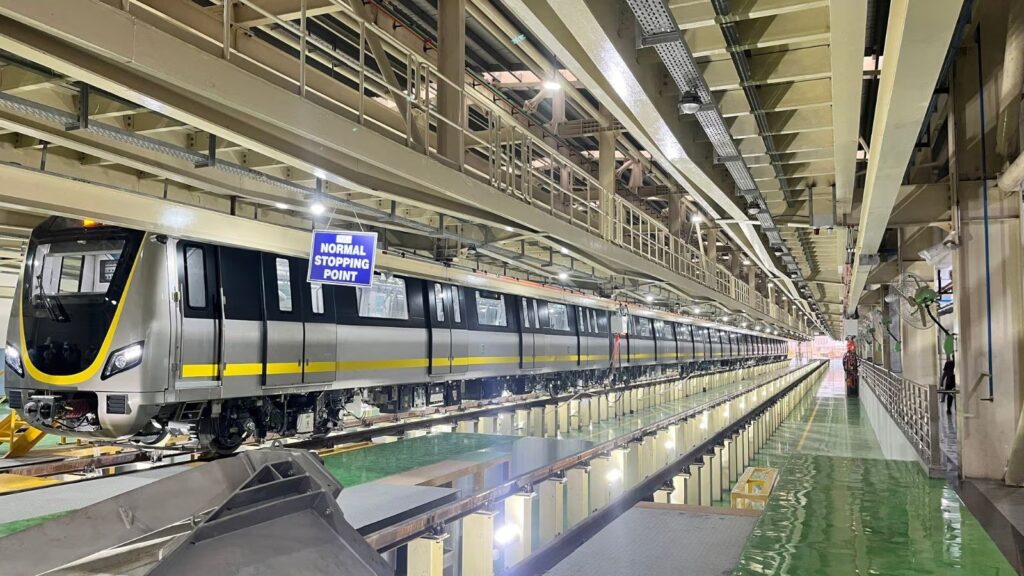Prime Minister Narendra Modi will inaugurate the much-awaited 19.15-km Yellow Line of Namma Metro, connecting RV Road to Bommasandra, and lay the foundation stone for the 44.65-km Phase-3 expansion of the Bengaluru Metro on August 10.
ARTICLE CONTINUES BELOW VIDEO
The Yellow Line, built at a cost of Rs 5,056.99 crore, features 16 stations and is expected to significantly ease traffic congestion, especially at the infamously congested Silk Board Junction. The line is estimated to cater to nearly eight lakh commuters daily, offering major connectivity between key residential and industrial corridors in southern Bengaluru and Electronic City respectively.
In addition, the Prime Minister will launch the Rs 15,611-crore Phase-3 expansion, which was approved by the Union Cabinet within the first 100 days of Modi 3.0. The Bengaluru Metro’s Phase 3, also known as the Orange Line, is a project to expand the city’s metro network by adding 44.65 km of new lines. The project includes two lines and 31 stations, with an estimated completion date by the end of 2029. Phase 3 will primarily serve underserved areas along Magadi Road and the western portion of the Outer Ring Road (ORR).
The two lines will connect JP Nagar 4th Phase to Kempapura (Hebbal) and Hosahalli to Kadabagere, with a portion also passing through Gorguntepalya, Magadi Road, and Mysuru Road.
A significant part of the project will involve a double-decker viaduct, where metro tracks will be built above existing roads and flyovers to optimize space
Union Minister for Home and Urban Affairs Manohar Lal Khattar said, “I am pleased to announce that the Hon’ble Prime Minister of India has kindly agreed to inaugurate the Yellow Line and lay the foundation stone for Phase-3 on August 10.”
Calling the occasion a “landmark moment for Bengaluru South,” local MP Tejasvi Surya expressed gratitude to the Prime Minister for prioritising public transport in the region. “With nearly Rs 20,000 crore worth of Metro infrastructure dedicated to this region alone, we are incredibly grateful to PM Modi for his continued focus, affection, and commitment to Bengaluru South’s public transport infrastructure,” he said.
Story continues below this ad
Together, the Yellow Line and Phase-3 projects are expected to benefit nearly 25 lakh commuters in the southern part of the city, enhancing overall urban mobility in Bengaluru.
On August 1, the Commissioner of Metro Railway Safety (CMRS) gave the safety clearance to BMRCL’s Yellow Line, clearing the way for commercial operations on the stretch. This development came nearly eight years after the civil works for the Yellow Line were awarded in 2017.
BMRCL currently has three trains in its Hebbagodi depot for the Yellow Line with the fourth train set on its way to Bengaluru.
The Yellow Line has suffered significant delays, primarily due to disruptions in the supply of metro coaches. CRRC, the Chinese firm originally contracted to supply the rolling stock, failed to meet the 75 per cent local manufacturing requirement mandated by the ‘Make in India’ policy. The issue was exacerbated by the India-China border standoff in June 2020, complications with foreign direct investment (FDI) norms, and Covid-related disruptions.
Story continues below this ad
To resolve the impasse, CRRC partnered with Bengal-based Titagarh Rail Systems to manufacture and deliver the coaches domestically. However, visa delays for Chinese engineers and the late arrival of propulsion systems from Japan further slowed down testing and commissioning of the corridor.


